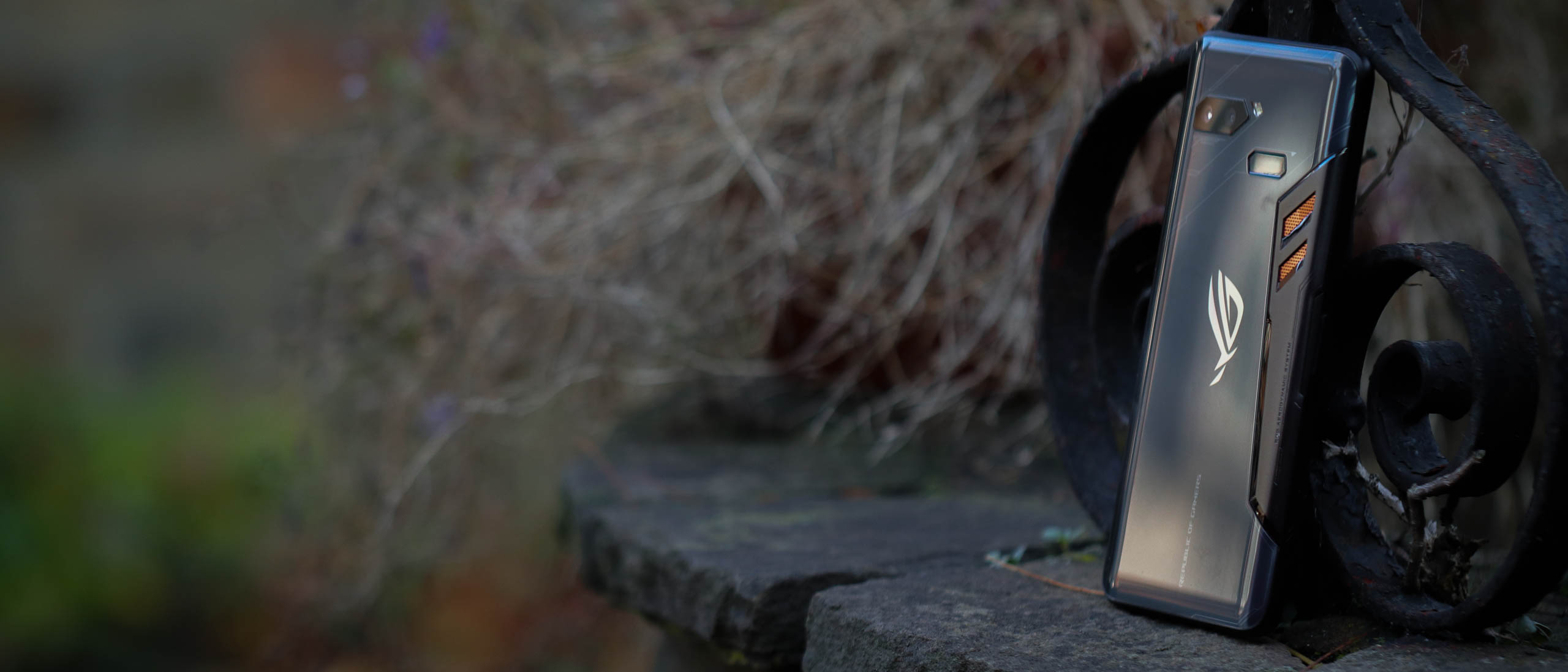Why you can trust TechRadar
User interface
- Android 8.1
- ROG version of Asus ZenUI
- Gaming enhancements
The Asus ROG Phone runs Android 8.1, and is loaded up with an overclocked version of Asus’s ZenUI. This comes complete with fierce-looking mech-inspired design flourishes, and a live wallpaper that fires up in sync with the RGB logo on the back of the phone.
Android, 8.1, also known as Oreo, is last year’s version of Google’s Mobile OS. On the one hand this still supports all the apps and services you’d be getting in the newer Android 9 (Pie), but on the other it isn’t Google’s freshest update.
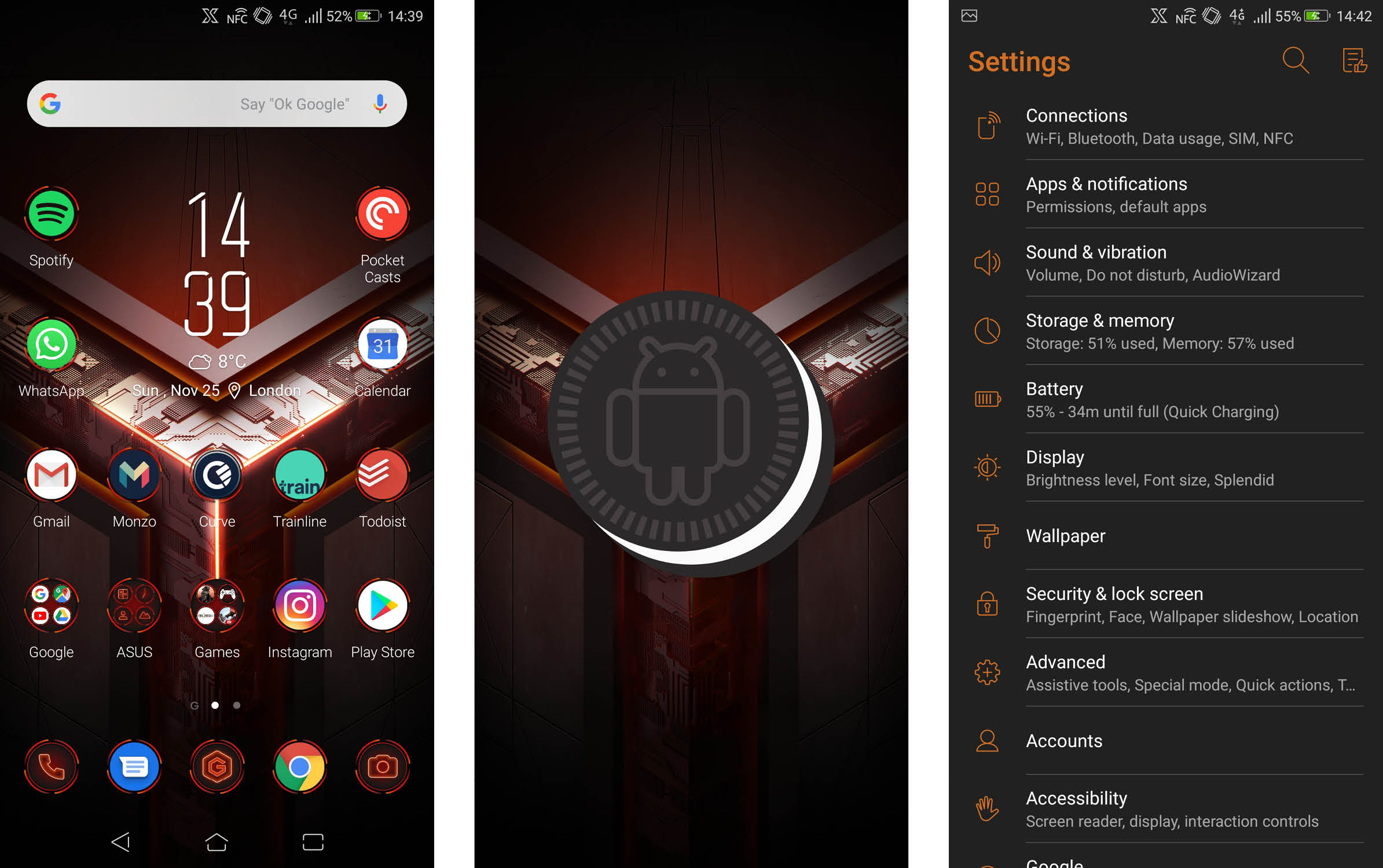
Your main interaction however is with Zen UI, Asus’s once heavy, now bearable skin that sits atop Android. It’s customizable, stable and not too bloated, with Asus’s proprietary software being limited to nine useful apps, including a calculator, sound recorder and gallery.
Where ZenUI flexes its muscles above and beyond the competition is in its tight integration of the new Game Center, debuting on the ROG Phone. Here you can customize game profiles, fire up X Mode, check geeky stats like your phone temperature and CPU load, and control accessories, like the fan that ships with the phone.
From a user interface point of view, therefore, it’s already a step ahead in terms of gaming, but it’s also got some neat day-to-day smarts in the settings.
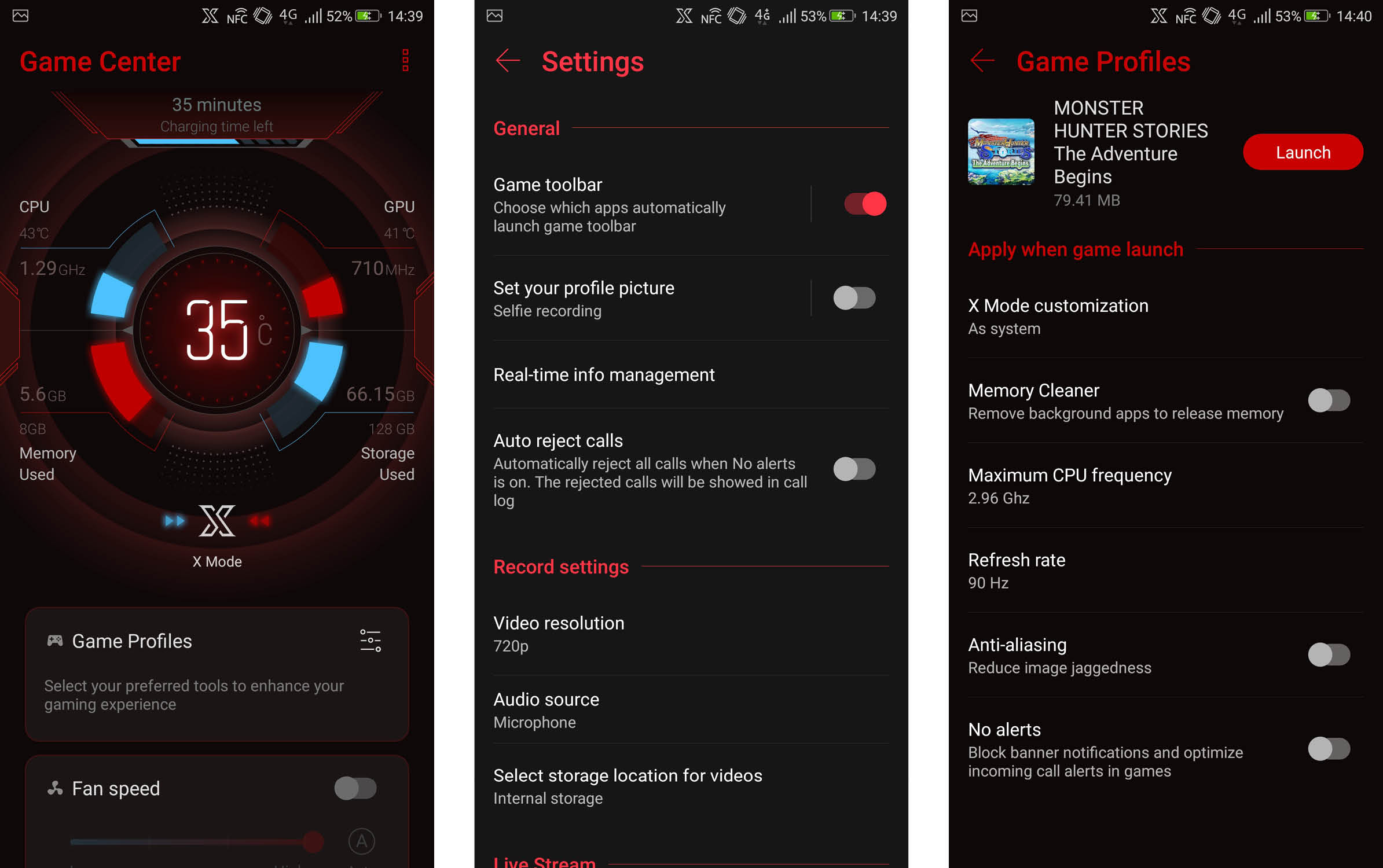
For starters, you have a huge amount of control over screen calibration. The blue light filter helps limit blue light that can interfere with sleep patterns, while the additional color options support color temperature control in addition to three presets – wide colour gamut, standard and customized, with the first of those looking nice and poppy.
There are also gesture shortcuts. For example, a swipe down anywhere on the screen can be set to pull down the notification bar – handy for anyone who doesn’t fancy an awkward reach up to see who’s been messaging – and you can activate double-tap to wake too.
The fundamentals of the UI are also very familiar. The home screens are where you load up your app shortcuts and widgets, there's an optional Google feed screen to the left, an apps drawer for all your installed apps, and a notification bar. There’s also a navigation bar that can be hidden, and brought back into view with a swipe up from the bottom of the screen.
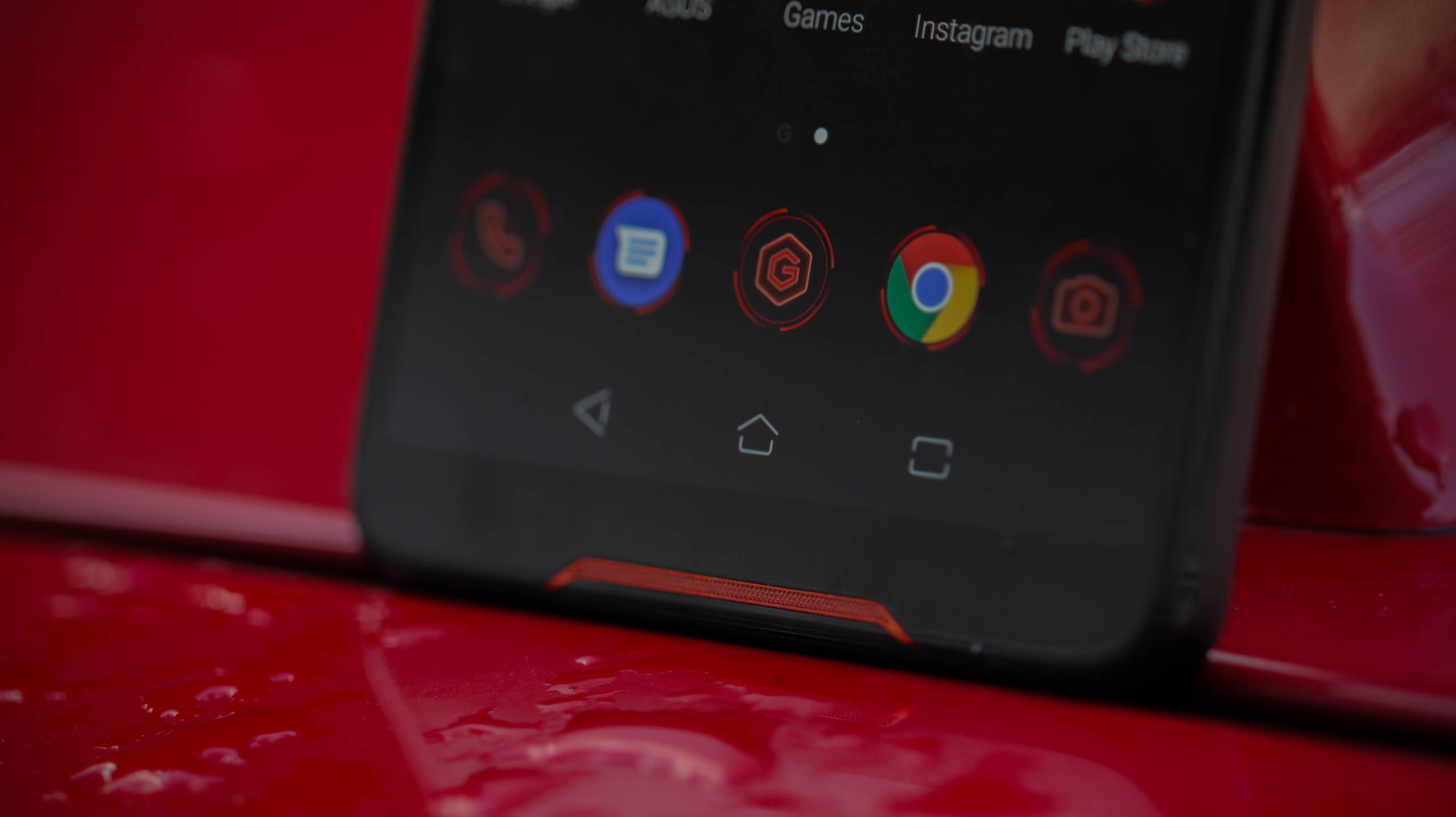
The squeezable sides also offer a customizable input, just like on the Pixel 3 XL. The ROG Phone’s squeeze options are more extensive though, supporting four commands in total: short or long squeeze when the screen is on, and, bettering the Pixel phones, short or long squeeze when the screen is off.
On the whole, the UI is fluid, especially when in 90Hz refresh rate mode, all the while being stable and looking sleek. The ROG Phone’s UI flourishes therefore impress, both stylistically and in terms of gaming-related enhancements.
That these extend to the back of the phone and the clip-on fan in the form of the light-up logo only adds to this phone’s joy-bringing novelty.
Gaming
- Overclocked processor
- AirTriggers for L/R input
- Additional gaming enhancements

The gaming experience is hugely enhanced by both the hardware and UI, and in particular by the AirTriggers. These are touch-sensitive elements at the top and bottom of the right side of the phone's frame, so on the top-left and top-right of the phone when you’re gaming in landscape orientation.
Acting like L and R triggers on a gaming controller, these can be mapped to trigger any part of the screen.
They’re responsive, easy to map and versatile, and they improve gaming across genres by keeping the screen free of fingers and thumbs, making for less visual obstructions.
Some examples of using the feature: when playing RPGs like Evoland 2, we set the right trigger to attack and interact, and the left trigger to menu; in Asphalt 9 they were set to boost and break; and in Injustice 2 they were set to the special moves we had levelled up the most, preventing accidental misfires of the wrong move.
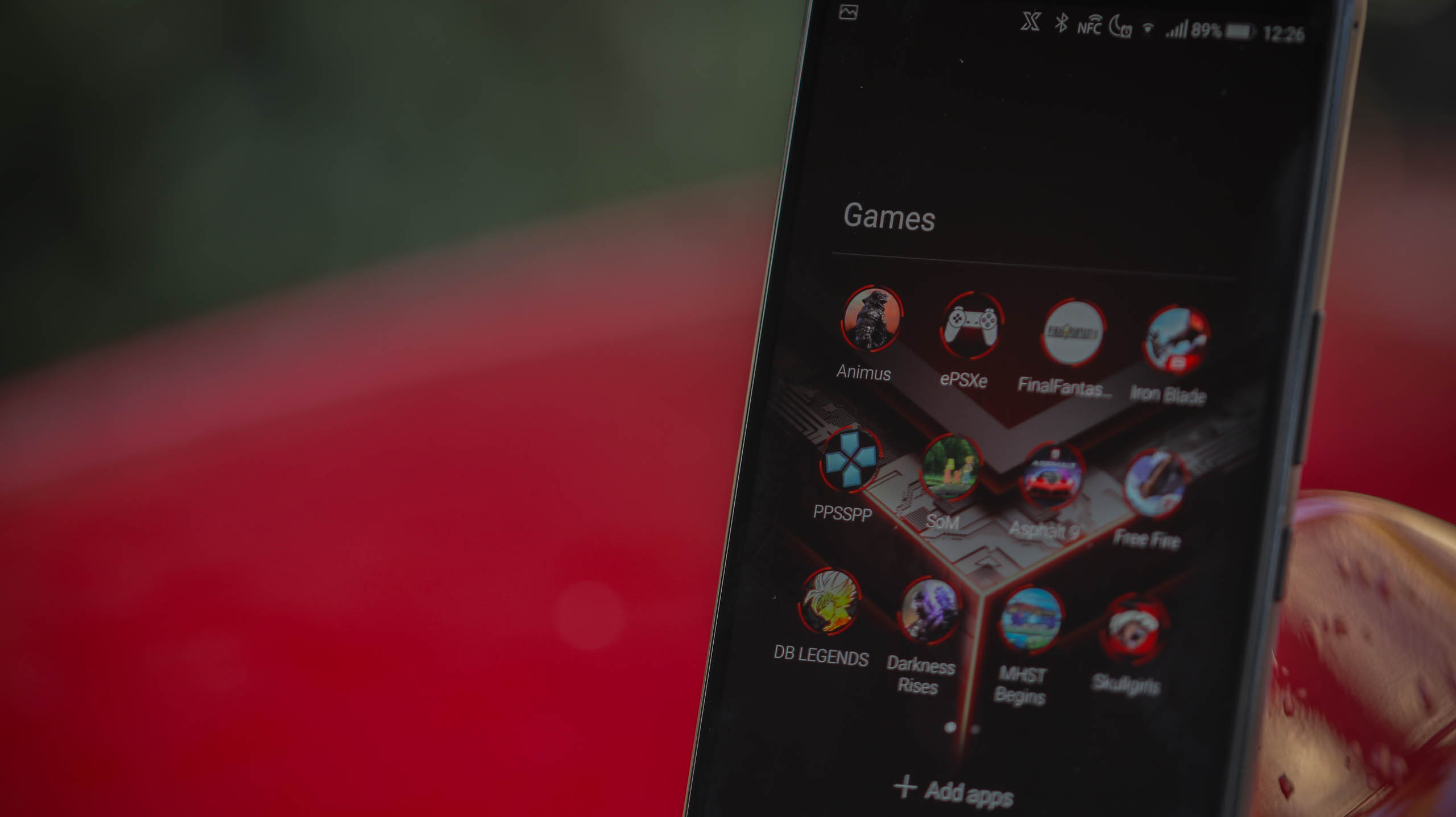
Other enhancements also supplement the gaming experience on the ROG Phone. For example, there's a floating bar that constantly displays really geeky stats – CPU temperature, frames per second, CPU and GPU loads and so on.
You can also natively livestream to YouTube Live and Twitch, using the front camera to record yourself in a picture-in-picture window in the corner of your gameplay, and this is how general in-game screen recording works too.
More niche – but exactly the kind of geekery you'd hope to see from a gaming phone – the ROG Phone also supports macros, so you can record multiple taps and swipes, and automate them with the press of a button.
The speakers sound ace, the visuals look impressive, there's ample power and storage, and Android is great for gaming. The side-mounted USB-C port is also an ergonomic stroke of genius, enabling charging and comfortable playback.
We should note that charging the phone and gaming simultaneously did get the ROG Phone a little hot under the collar, but the clip-on RGB fan supplied in the box was able to bring down the temperature a few degrees, making a tangible difference to the feel in the hand.
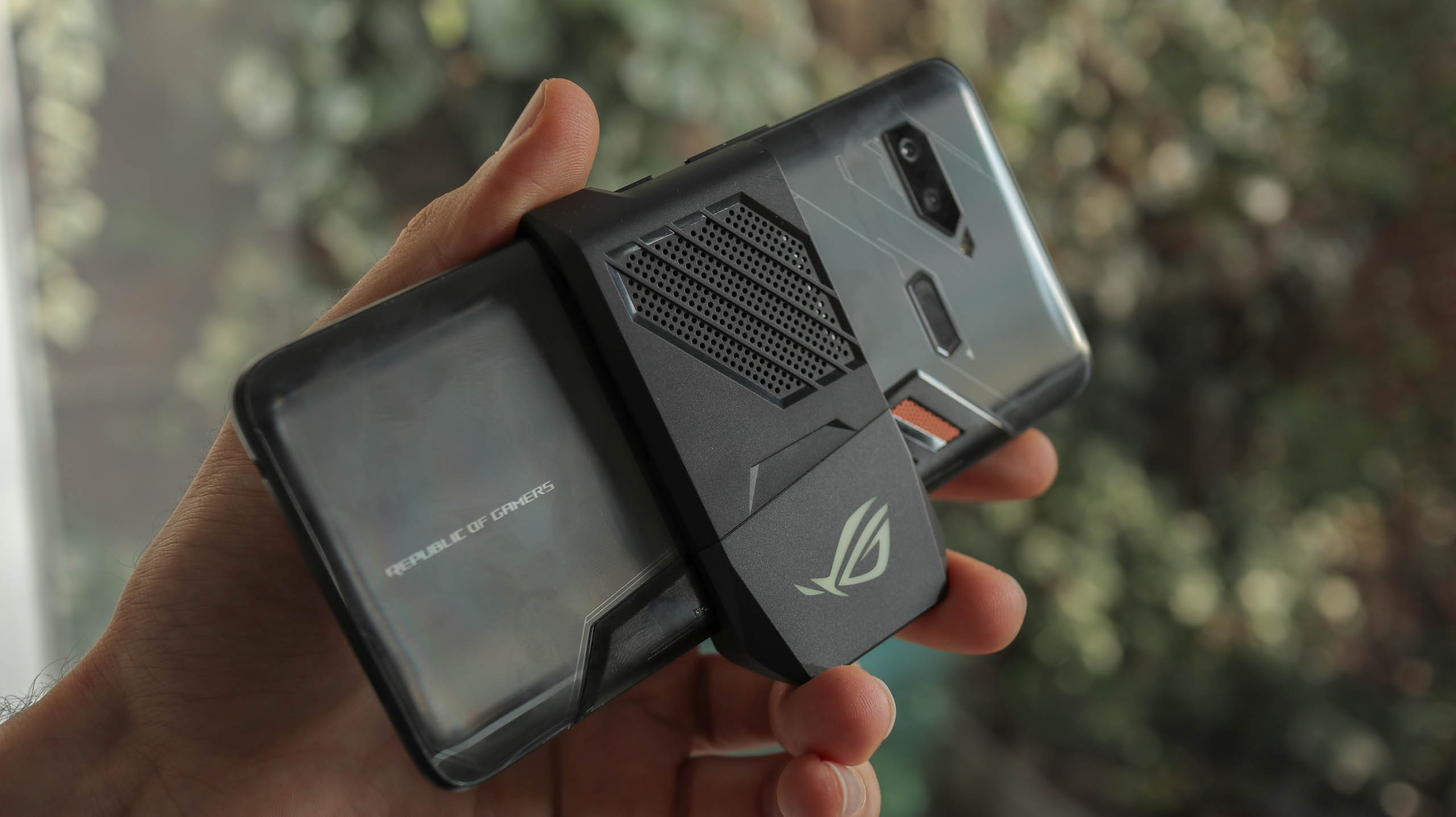
On the subject of the fan, yes, there are loads of optional accessories too, but what's good about the ROG Phone is that it doesn't need a single one of them in order to be a lot of fun. Perhaps the only things missing are ROG Phone-exclusive games and perks, but even that would just be decoration, with the basics being far more important, and accounted for.
Performance
- Snapdragon 845
- Overclocked processor
- 8GB RAM
The Qualcomm Snapdragon 845 processor inside the Asus ROG Phone, which is overlocked at 2.96GHz versus the Razer Phone 2’s 2.8GHz clock speed, is paired with 8GB RAM.
Talking pure benchmarks, while Huawei hasn’t got the cleanest track record in this department, the Mate 20 and Mate 20 Pro currently beat out the ROG Phone across both Geekbench and Antutu.
That said, only Huawei phones get Kirin chips, and outside the Huawei – and of course, Apple – worlds, the ROG Phone reigns supreme, returning a Geekbench multi-core score of 9193.
Real-world use is unsurprisingly excellent. We've already gushed about how smooth the UI is, and gaming is effortless.
The phone doesn't get too hot in the hand (as mentioned, it only heats up noticeably if you charge it while you’re gaming), the zippy refresh rate helps optimized games along, and even 30fps locked games like Injustice 2 play out with such ferocious speed that we weren't left wishing for more Hz.
Basil Kronfli is the Head of content at Make Honey and freelance technology journalist. He is an experienced writer and producer and is skilled in video production, and runs the technology YouTube channel TechEdit.
